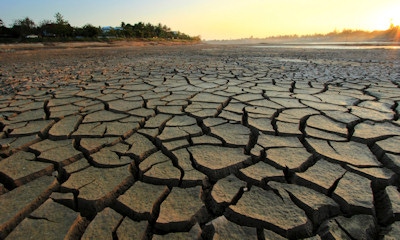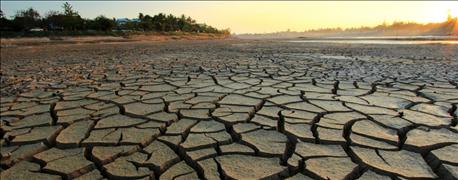January 19, 2016

El Niño conditions throughout 2015 have helped much of U.S. recover from severe drought. But the long-term forecast calls for conditions to change by spring 2016.
Brian Bledsoe, chief meteorologist for KKTV in Colorado Springs, says, “This blessing of moisture we’ve had is not going to last. Ranchers should be very diligent and plan how they will use this moisture in the short term.”
Of the current status in the Western Plains, Bledsoe says, “We are in pretty good shape considering where we’ve been with drought the last several years.”

DROUGHT AHEAD? El Nino has been strong but predicted to go away in 2016. That has forecasters suggesting cattle producers develop a drought plan.
He credits this to the strong El Niño in progress – the second strongest since 1950. Bledsoe, who grew up on a ranch in Colorado and was a former meteorologist for KDLT-TV in Sioux Falls, explains, “The Pacific Ocean is hot. The ocean waters have been warm for the past year and that has had a huge impact on weather patterns globally.”
He further explains that El Niño does things to the storm track that make weather conditions more active in the southern tier of the U.S. “That’s what we’ve been seeing. Montana and the Dakotas have not been getting the big storms.”
Conversely, when the Pacific waters are in a cold phase it tends to cause drought in the Western High Plains. “That was what occurred from 2005-2013,” says Bledsoe.
When there is a cool phase in the Pacific Ocean, there’s a greater change for drought in the West. He says weather statistics indicate the Western High Plains faces drought 75% of the time.
To this Bledsoe says to producers, “If you don’t have a drought plan, you better get one – yesterday! There’s no ‘might’ about this. If you ‘might,’ you will lose a lot of money.”
He continues, “If you don’t have grass, you don’t have cattle on the place. You can’t feed yourself out of a drought. But, if you have a plan, you can act and not have to sell your whole herd. So, get a drought plan.”
Specific forecast
Bledsoe believes El Niño will peak in December 2015, and then he anticipates it will rapidly diminish in intensity going into spring. He says, “By spring several computer models suggest a neutral or even weak La Niña” – which is a cooling of the waters in the Pacific.
As a result of these changes, Bledsoe says California and southern states should be “soggy” from December through mid-Spring.
However, in the Northern Plains “moisture may get shorted.” But that is projected to change come June through August 2016. Bledsoe says if La Niña is in place then the northern tier of the country will correct and be OK for moisture through the summer.
Conversely, La Niña would prompt drier conditions across the southeastern and southwestern states. And he reminds producers “That’s how it [the drought] all started last time.”
Bledsoe parallels the pending spring and summer 2016 forecast to 1997 and 1998. He says, “That was a strong El Niño with plenty of moisture in early spring. Then moisture shut off in May, June and July.”
Bledsoe says the big picture from his message going forward is this: “The weather times from the 70’s through 90’s – those times are over. Today, the drier times are longer and more frequent so ranchers have to have a drought plan.”
To ranchers who are currently restocking, Bledsoe says, “You need perspective at these prices. If you overextend yourself now and have a wreck, you’re done. My advice is to be cautious. It’s not going to be wet forever, and summer 2016 could be drier, especially in the South.”
You May Also Like




